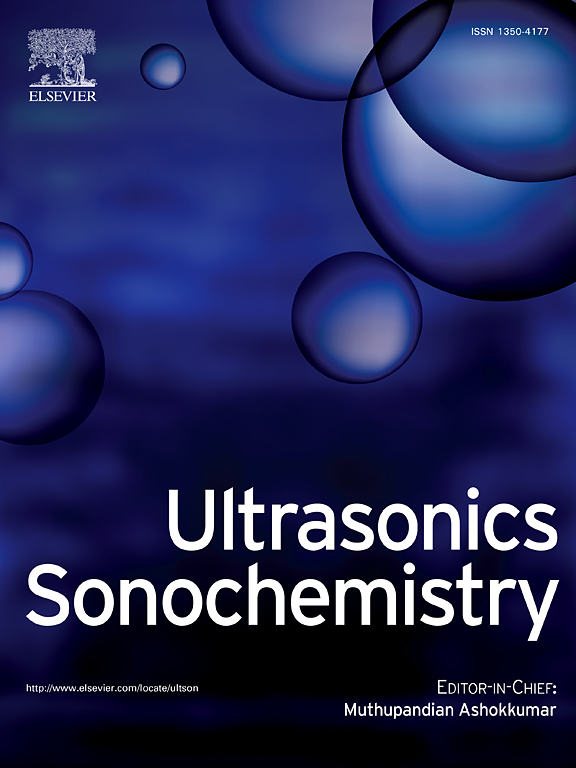冲击波在材料加工中的作用:基础和应用
IF 8.7
1区 化学
Q1 ACOUSTICS
引用次数: 0
摘要
近年来,超声波加工(USP)技术在制药、食品、环境和材料科学领域取得了一些最有前途的科学突破,从而在制造、工艺效率和材料性能方面取得了进步。然而,USP的工业可扩展性仍然是一个关键的挑战,主要是由于缺乏意识、标准化和预测性的多物理场模型。优化这项技术需要自下而上的方法,强调在扩大规模之前对物理现象的基本理解。尽管光声表征工具取得了进步,但推动这些技术创新的根本原因仍未被探索。本文全面概述了我们在过去5年 中开展的工作,通过采用原位高速可视化技术和声发射表征,揭示了在金属铸造、增材制造、纳米材料和复合材料生产等领域管理USP部署的基本机制。本文中提出和讨论的结果为空化引起的冲击波的关键作用提供了一个新的视角,将焦点从仅仅是副产品转移到USP期间材料改性的主要驱动因素。本文章由计算机程序翻译,如有差异,请以英文原文为准。
Role of shock waves in materials processing: Fundamentals and Applications
In recent years, ultrasonic processing (USP) technology has led to some of the most promising scientific breakthroughs in the field of pharmaceutical, food, environmental and material sciences leading to advancements in manufacturing, process efficiency, and material performance. However, the industrial scalability of USP still remains a key challenge, largely due to the lack of awareness, standardization and predictive multiphysics models. Optimizing this technology necessitates a bottom-up approach, emphasizing fundamental understanding of the physical phenomena at play prior to scaling-up. Despite the advancements of opto-acoustic characterization tools, the underlying root-cause driving these technological innovations remains unexplored. This paper provides a comprehensive overview of our work carried out in the last 5 years to uncover the fundamental mechanism that governs the deployment of USP in areas related to metal casting, additive manufacturing, production of nanomaterials and composites by employing in-situ high-speed visualizations techniques and characterization of acoustic emissions. The results presented and discussed in this article offer a new perspective on the pivotal role of cavitation-induced shock waves, shifting the focus from being just a by-product, to a primary driver of material modification during USP.
求助全文
通过发布文献求助,成功后即可免费获取论文全文。
去求助
来源期刊

Ultrasonics Sonochemistry
化学-化学综合
CiteScore
15.80
自引率
11.90%
发文量
361
审稿时长
59 days
期刊介绍:
Ultrasonics Sonochemistry stands as a premier international journal dedicated to the publication of high-quality research articles primarily focusing on chemical reactions and reactors induced by ultrasonic waves, known as sonochemistry. Beyond chemical reactions, the journal also welcomes contributions related to cavitation-induced events and processing, including sonoluminescence, and the transformation of materials on chemical, physical, and biological levels.
Since its inception in 1994, Ultrasonics Sonochemistry has consistently maintained a top ranking in the "Acoustics" category, reflecting its esteemed reputation in the field. The journal publishes exceptional papers covering various areas of ultrasonics and sonochemistry. Its contributions are highly regarded by both academia and industry stakeholders, demonstrating its relevance and impact in advancing research and innovation.
 求助内容:
求助内容: 应助结果提醒方式:
应助结果提醒方式:


